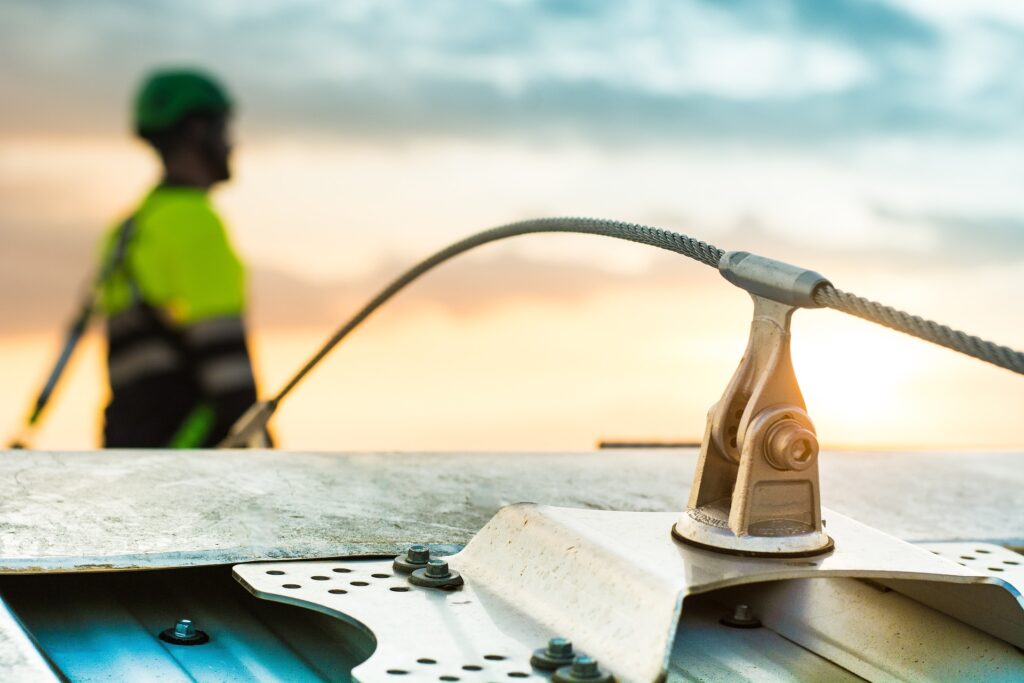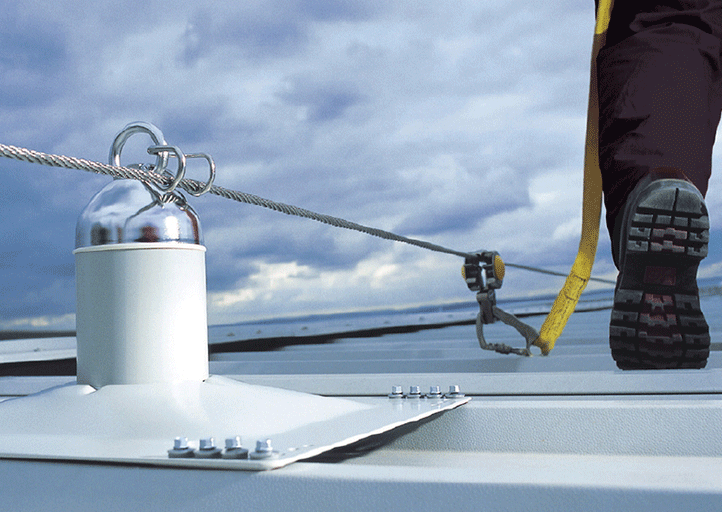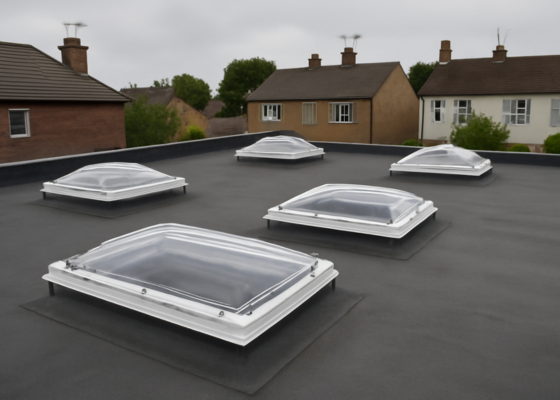Fall restraint Vs fall arrest – so what is the difference?
Before looking at the differences between fall restraint and arrest, we need to be very clear.
You should only choose these systems as a last resort when other control measures are impossible. (see our blog on the Hierarchy of control for working at height).
This is because both systems involve using personal protective equipment (PPE). Unlike collective protection, user safety depends on correct use, so all workers must be trained to inspect and use the equipment.
Preventing a fall from height
You should always select fall restraint over fall arrest when working at height. As the name suggests, a restraint system prevents a fall from happening in the first place.
Systems usually involve using a harness and lanyard connected to a suitable anchor point. This could be a mobile man anchor or lifeline system. The lanyard’s length is critical for fall restraint. Ideally, this should be a fixed length to restrict the worker’s movement to prevent them from reaching the edge of a roof or other hazardous area.

When should you use fall restraint?
Systems are typically used when there are no guardrails or other physical barriers to prevent falls or when the guardrails or barriers are insufficient to protect the worker from the fall hazard.
They’re suitable if a worker needs to work at the roof’s edge, such as for gutter cleaning or working from an elevated platform.
Stopping a person falling
As the name implies, fall arrest systems stop someone from falling before they come into contact with a surface or the ground. Like fall restraint, systems consist of a fall arrest lanyard attached to an anchor point by a body harness. But, instead of preventing someone from reaching a fall hazard, users can work in areas with a fall risk. If the worker does fall, the system will absorb the shock of the fall, slow the descent and prevent serious injury.
Anyone using a fall arrest system must be competent. That means they must have full training on using and inspecting the system before use. You also need to have a plan to rescue someone if they fall.
When should you use fall arrest?
Fall arrest systems are typically used when work is carried out at the leading edge of a roof or around fragile surfaces such as rooflights. They are also suitable when limited space means collective measures such as guardrails are impossible.
Generally, fall arrest equipment will be required if the worker can reach a fall hazard.
Are you using the right system?
Industry jargon can be confusing. But you must understand the difference between fall restraint and fall arrest to protect your workers at height.
If you don’t, you could use the wrong system with disastrous results.
Remember, fall restraint prevents a fall from happening in the first place, while fall arrest stops someone who has already fallen.
Of course, speaking to a fall protection specialist is the best way to guarantee you’re using the right system. That’s where we come in. If you need help or advice about choosing the right fall protection system, our team is here to help.


